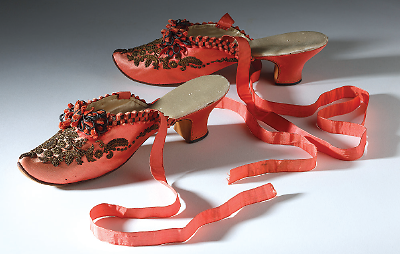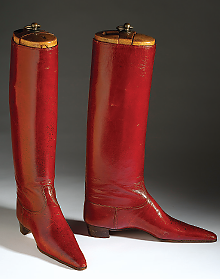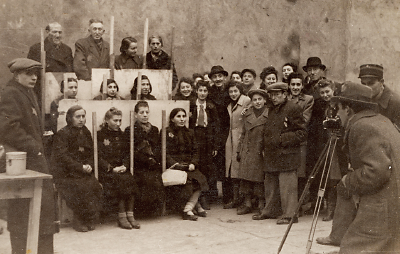Yes, there are impressive art, culture, and natural history museums in Toronto, but there may be no other annual meeting city that hosts a vast collection documenting the variety and history of shoes.
The Bata Shoe Museum, established in 1995 and housed in an architecturally unique five-story building, arose from the passion of Sonja Bata, who, beginning in the 1940s, searched the world for footwear of every description from the commonplace to the unique and outrageous. It is, of course, about more than just the changing fashions in footwear, putting these creations in a cultural and historic context that reveals much about the people who wore them, their values and attitudes, and the times in which they lived.
Among the shoes in the museum’s collections of more than 13,000 items are ones from regions where traditions are rapidly changing and disappearing, such as indigenous cultures in the United States, Canada, Greenland, and Siberia.
The collections span about 4,500 years of history and contain artifacts from a vast array of the world’s cultures. Among just a few of the rarities are French chestnut-crushing boots, delicately embroidered Chinese shoes, Japanese samurai shoes made from bear fur, and footwear crafted from human hair.
Shoes that once graced the feet of well-known celebrities and historic figures are also popular attractions. Where else can you get up close and personal with Queen Victoria’s ballroom slippers, Robert Redford’s cowboy boots, Elton John’s monogrammed platform boots, and Elvis Presley’s blue patent-leather loafers?
A featured exhibit during APA’s annual meeting has the intriguing title “Fashion Victims: The Pleasures and Perils of Dress in the 19th Century.” While the upper classes sported the latest in expensive garments for their feet and the rest of their bodies, the exhibit shows how “presenting an elegant exterior was not without its perils. The discomfort of constricting corsets and impossibly narrow footwear was matched by the dangers of wearing articles of fashion dyed with poison-laced colours and made of highly flammable materials.”
Royal Ontario Museum
For museumgoers who want something considerably more traditional, the Royal Ontario Museum is replete with galleries and exhibits that highlight and illuminate the uniqueness of world cultures and the wonders of the natural world.
Extensive cultural exhibits are, for example, devoted to Chinese temple art and tombs, Canada’s first peoples, Egyptian history and art, textiles and costumes, and ancient Cyprus.
Natural history collections find entire galleries focusing on bat caves, birds of all shapes and sizes, dinosaurs, fossils, and biodiversity, among others. Iconic objects featured are the Tagish Lake meteorite containing primitive organic material dating back to the birth of the solar system and the Striding Lion Terracotta Relief that came from the palace of King Nebuchadnezzar II of Babylon.
Arthur Conan Doyle Collection
Visiting Toronto museums also makes it easy to shift from ancient Babylon to 19th-century England, since the city boasts of having one of the world’s best Arthur Conan Doyle collections. To uncover its secrets, head to the fifth floor of the Toronto Reference Library, where there is an extensive array of artifacts, manuscripts, and correspondence related to his most famous creation—Sherlock Holmes. But it also documents the author’s other works, which, to his dismay, were always overshadowed by the popularity of his quirky detective. Many books from his own collection are on display.
Visitors can wander the room, decorated like the apartment at 221b Baker Street in which the author had his famous characters live, and read the works at their leisure.
Art Gallery of Ontario
One of the world’s most renowned architects, Frank Gehry, is a Toronto native, and his design for the façade of the Art Gallery of Ontario (AGO) is as innovative and eye-catching as his other art and music venues. Inside, the AGO houses more than 80,000 works dating from the 1st century to the 21st and contains the world’s largest collection of Canadian art.
The AGO is especially strong in its collections of Baroque and Renaissance works as well as extensive African and Oceanic art resources. Its Old Master Collection is composed of works in three areas: Dutch painting from the 1600s, Italian painting and sculpture from the 1600s, and French Salon and Impressionist painting from the 1800s.
Photography buffs will also want to add the AGO to the free-time agenda. The collection spans the history of the medium from the 1840s to the present day and includes more than 40,000 works.
As part of its commitment to photography, the AGO recently opened the exhibition “Memory Unearthed: The Lodz Ghetto Photographs of Henryk Ross.” From 1940 to 1944, Ross, who was Jewish, was one of the official ghetto photographers in Lodz, Poland, which had the second-largest Jewish population in Poland before World War II. In early February 1940, the Germans established a ghetto in one small section of Lodz.
About 160,000 Jews, more than a third of the city’s population, were forced into that area. In 1941 and 1942, almost 40,000 additional Jews were deported to the Lodz ghetto from Poland and other countries. According to the United States Holocaust Memorial Museum, “Living conditions in the ghetto were horrendous. Most of the quarter had neither running water nor a sewer system. Hard labor, overcrowding, and starvation were the dominant features of life. … More than 20 percent of the ghetto’s population died as a direct result of the harsh living conditions.” In January 1942, German authorities began to deport Jews from Lodz to the Chelmno killing center.
Ross took “official” images of the ghetto’s population to promote the ghetto’s work efficiency, the AGO explains on its website. He also put his life at risk by documenting the suffering and despair of ghetto residents, thousands of whom died of disease and starvation. Ross buried his negatives in 1944 and exhumed them when the Russian army liberated the ghetto in 1945, though only half of the 6,000 negatives survived. About 200 of the images are in the AGO exhibit. ■




